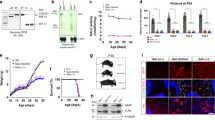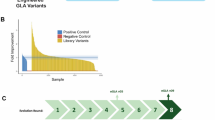Abstract
Krabbe disease is an autosomal recessive leukodystrophy caused by a deficiency of the galactocerebrosidase (GALC) enzyme. Hematopoietic stem cells transplantation is the only available treatment option for pre-symptomatic patients. We have previously reported the chaperone effect of N-octyl-4-epi-β-valienamine (NOEV) on mutant GM1 β-galactosidase proteins, and in a murine GM1-gangliosidosis model. In this study, we examined its chaperone effect on mutant GALC proteins. We found that NOEV strongly inhibited GALC activity in cell lysates of GALC-transfected COS1 cells. In vitro NOEV treatment stabilized GALC activity under heat denaturation conditions. We also examined the effect of NOEV on cultured COS1 cells expressing mutant GALC activity and human skin fibroblasts from Krabbe disease patients: NOEV significantly increased the enzyme activity of mutants of late-onset forms. Moreover, we confirmed that NOEV could enhance the maturation of GALC precursor to its mature active form. Model structural analysis showed NOEV binds to the active site of human GALC protein. These results, for the first time, provide clear evidence that NOEV is a chaperone with promising potential for patients with Krabbe disease resulting from the late-onset mutations.
Similar content being viewed by others
Log in or create a free account to read this content
Gain free access to this article, as well as selected content from this journal and more on nature.com
or
References
Wenger, D. A., Escolar, M. L., Luzi, P. & Rafi, M. A . Krabbe disease (globoid cell leukodystrophy), in: Scriver’s The Online Metabolic and Molecular Bases of Inherited Disease (OMMBID). Available at http://ommbid.mhmedical.com/content.aspx?bookid=474§ionid=45374150 Accessed on 7 March 2014 (2013).
Sakai, N., Inui, K., Fujii, N., Fukushima, H., Nishimoto, J., Yanagihara, I. et al. Krabbe disease: isolation and characterization of a full-length cDNA for human galactocerebrosidase. Biochem. Biophys. Res. Commun. 198, 485–491 (1994).
Nagano, S., Yamada, T., Shinnoh, N., Furuya, H., Taniwaki, T. & Kira, J. Expression and processing of recombinant human galactosylceramidase. Clin. Chim. Acta 276, 53–61 (1998).
Wenger, D. A., Rafi, M. A. & Luzi, P. Molecular genetics of Krabbe disease (globoid cell leukodystrophy): diagnostic and clinical implications. Hum. Mutat. 10, 268–279 (1997).
Hossain, M. A., Otomo, T., Saito, S., Ohno, K., Sakuraba, H., Hamada, Y. et al. Late-onset Krabbe disease is predominant in Japan and its mutant precursor protein undergoes more effective processing than the infantile-onset form. Gene 534, 144–154 (2014).
Suzuki, K. Twenty five years of the "psychosine hypothesis": a personal perspective of its history and present status. Neurochem. Res. 23, 251–259 (1998).
Escolar, M. L., Poe, M. D., Provenzale, J. M., Richards, K. C., Allison, J., Wood, S. et al. Transplantation of umbilical-cord blood in babies with infantile Krabbe’s disease. N. Engl. J. Med. 352, 2069–2081 (2005).
Lee, W. C., Courtenay, A., Troendle, F. J., Stallings-Mann, M. L., Dickey, C. A., DeLucia, M. W. et al. Enzyme replacement therapy results in substantial improvements in early clinical phenotype in a mouse model of globoid cell leukodystrophy. FASEB J. 19, 1549–1551 (2005).
Lee, W. C., Tsoi, Y. K., Troendle, F. J., DeLucia, M. W., Ahmed, Z., Dicky, C. A., Dickson, D. W. et al. Single-dose intracerebroventricular administration of galactocerebrosidase improves survival in a mouse model of globoid cell leukodystrophy. FASEB J. 21, 2520–2527 (2007).
Ribbens, J., Whiteley, G., Furuya, H., Southall, N., Hu, X., Marugan, J. et al. A high-throughput screening assay using Krabbe disease patient cells. Analyt. Biochem. 434, 15–25 (2013).
Lee, W. C., Kang, D., Causevic, E., Herdt, A. R., Eckman, E. A. & Eckman, C. B. Molecular characterization of mutations that cause globoid cell leukodystrophy and pharmacological rescue using small molecule chemical chaperones. J. Neurosci. 30, 5489–5497 (2010).
Ogawa, S., Matsunaga, Y. K. & Suzuki, Y. Chemical modification of the beta-glucocerebrosidase inhibitor N-octyl-beta-valienamine: synthesis and biological evaluation of 4-epimeric and 4-O-(beta-D-galactopyranosyl) derivatives. Bioorg. Med. Chem. 10, 1967–1972 (2002).
Iwasaki, H., Watanabe, H., Iida, M., Ogawa, S., Tabe, M., Higaki, K. et al. Fibroblast screening for chaperone therapy in beta-galactosidosis. Brain Dev. 28, 482–486 (2006).
Higaki, K., Li, L., Bahrudin, U., Okuzawa, S., Takamuram, A., Yamamoto, K. et al. Chemical chaperone therapy: chaperone effect on mutant enzyme and cellular pathophysiology in β-galactosidase deficiency. Hum. Mutat. 32, 843–852 (2011).
Matsuda, J., Suzuki, O., Oshima, A., Yamamoto, Y., Noguchi, A., Takimoto, K. et al. Chemical chaperone therapy for brain pathology in GM1-gangliosidosis. Proc. Natl Acad. Sci. USA 100, 15912–15917 (2003).
Suzuki, Y., Ichinomiya, S., Kurosawa, M., Matsuda, J., Ogawa, S., Iida, M. et al. Therapeutic chaperone effect of N-octyl 4-epi-β-valienamine on murine GM1-gangliosidosis. Mol. Genet. Metab. 106, 92–98 (2012).
Lowry, O. H., Rosebrough, N. J., Farr, A. L. & Randall, R. J. Protein measurement with the folin phenol reagent. J. Biol. Chem. 193, 265–275 (1951).
Sali, A. & Blundell, T. L. Comparative protein modeling by satisfaction of spatial restraints. J. Mol. Biol. 234, 779–815 (1993).
Trott, O. & Olson, A. J. AutoDock Vina: improving the speed and accuracy of docking with a new scoring function, efficient optimization and multithreading. J. Comp. Chem 31, 455–461 (2010).
Sugawara, K., Tajima, Y., Kawashima, I., Tsukimura, T., Saito, S., Ohno, K. et al. Molecular interaction of imino sugars with human alpha-galactosidase: insight into the mechanism of complex formation and pharmacological chaperone action in Fabry disease. Mol. Genet. Metab. 96, 233–238 (2009).
Tajima, Y., Saito, S., Ohno, K., Tsukimura, T., Tsujino, S. & Sakuraba, H. Biochemical and structural study on a S529V mutant alpha-glucosidase responsive to pharmacological chaperones. J. Hum. Genet. 56, 440–446 (2011).
Maegawa, G. H., Tropak, M., Buttner, J., Stockley, T., Kok, F., Clarke, J. T. et al. Pyrimethamine as a potential pharmacological chaperone for late-onset forms of GM2 gangliosidosis. J. Biol. Chem. 282, 9150–9161 (2007).
Maegawa, G. H., Tropak, M. B., Buttner, J. D., Rigat, B. A., Fuller, M., Pandit, D. et al. Identification and characterization of ambroxol as an enzyme enhancement agent for Gaucher disease. J. Biol. Chem. 284, 23502–23516 (2009).
Marugan, J. J., Zheng, W., Motabar, O., Southall, N., Goldin, E., Westbroek, W. et al. Evaluation of quinazoline analogues as glucocerebrosidase inhibitors with chaperone activity. J. Med. Chem. 54, 1033–1058 (2011).
Motabar, O., Goldin, E., Leister, W., Liu, K., Southall, N., Huang, W. et al. A high throughput glucocerebrosidase assay using the natural substrate glucosylceramide. Anal. Bioanal. Chem. 402, 731–739 (2012).
Zheng, W., Padia, J., Urban, D. J., Jadhav, A., Goker-Alpan, O., Simeonov, A. et al. Three classes of glucocerebrosidase inhibitors identified by quantitative high-throughput screening are chaperone leads for Gaucher disease. Proc. Natl Acad. Sci. USA 104, 13192–13197 (2007).
Clarke, J. T., Mahuran, D. J., Sathe, S., Kolodny, E. H., Rigat, B. A., Raiman, J. A. et al. An open-label phase I/II clinical trial of pyrimethamine for the treatment of patients affected with chronic GM2 gangliosidosis (Tay-Sachs or Sandhoff variants). Mol. Genet. Metab. 102, 6–12 (2011).
Ishii, S. Pharmacological chaperone therapy for Fabry disease. Proc. Jpn. Acad B 88, 18–30 (2012).
Mu, T. W., Ong, D. S., Wang, Y. J., Balch, W. E., Yates, J. R., Segatori, L. et al. Chemical and biological approaches synergize to ameliorate protein-folding diseases. Cell 134, 769–781 (2008).
Deane, J. E., Graham, S. C., Kim, N. N., Stein, P. E., McNair, R., Cachón-González, M. B. et al. Insights into Krabbe disease from structures of galactocerebrosidase. Proc. Natl Acad. Sci. USA 108, 15169–15173 (2011).
Fu, L., Inui, K., Nishigaki, T., Tatsumi, N., Tsukamoto, H., Kokubu, C. et al. Molecular heterogeneity of Krabbe disease. J. Inher. Metab. Dis 22, 155–162 (1999).
Conzelmann, E. & Sandhoff, K. Partial enzyme deficiencies: residual activities and the development of neurological disorders. Dev. Neurosci. 6, 58–71 (1983).
Acknowledgements
This work was supported by grants from the Ministry of Education, Culture, Science, Sports and Technology (14207106), Grant-in-Aid for Scientific Research (C) (25461543), Ministry of Health, Labour and Welfare of Japan (H22-Nanji-Ippan-002) and grant from Japan Science and Technology Agency (AS232Z00009G). We thank Dr Koji Inui and Dr Motohiro Akagi who inspired and suggested much of our investigation.
Author information
Authors and Affiliations
Corresponding author
Ethics declarations
Competing interests
The authors declare no conflict of interest.
Rights and permissions
About this article
Cite this article
Hossain, M., Higaki, K., Saito, S. et al. Chaperone therapy for Krabbe disease: potential for late-onset GALC mutations. J Hum Genet 60, 539–545 (2015). https://doi.org/10.1038/jhg.2015.61
Received:
Revised:
Accepted:
Published:
Issue date:
DOI: https://doi.org/10.1038/jhg.2015.61
This article is cited by
-
Unfolded protein response is activated in Krabbe disease in a manner dependent on the mutation type
Journal of Human Genetics (2018)
-
Emptying the stores: lysosomal diseases and therapeutic strategies
Nature Reviews Drug Discovery (2018)
-
New in Newborn Screening
Current Genetic Medicine Reports (2017)



